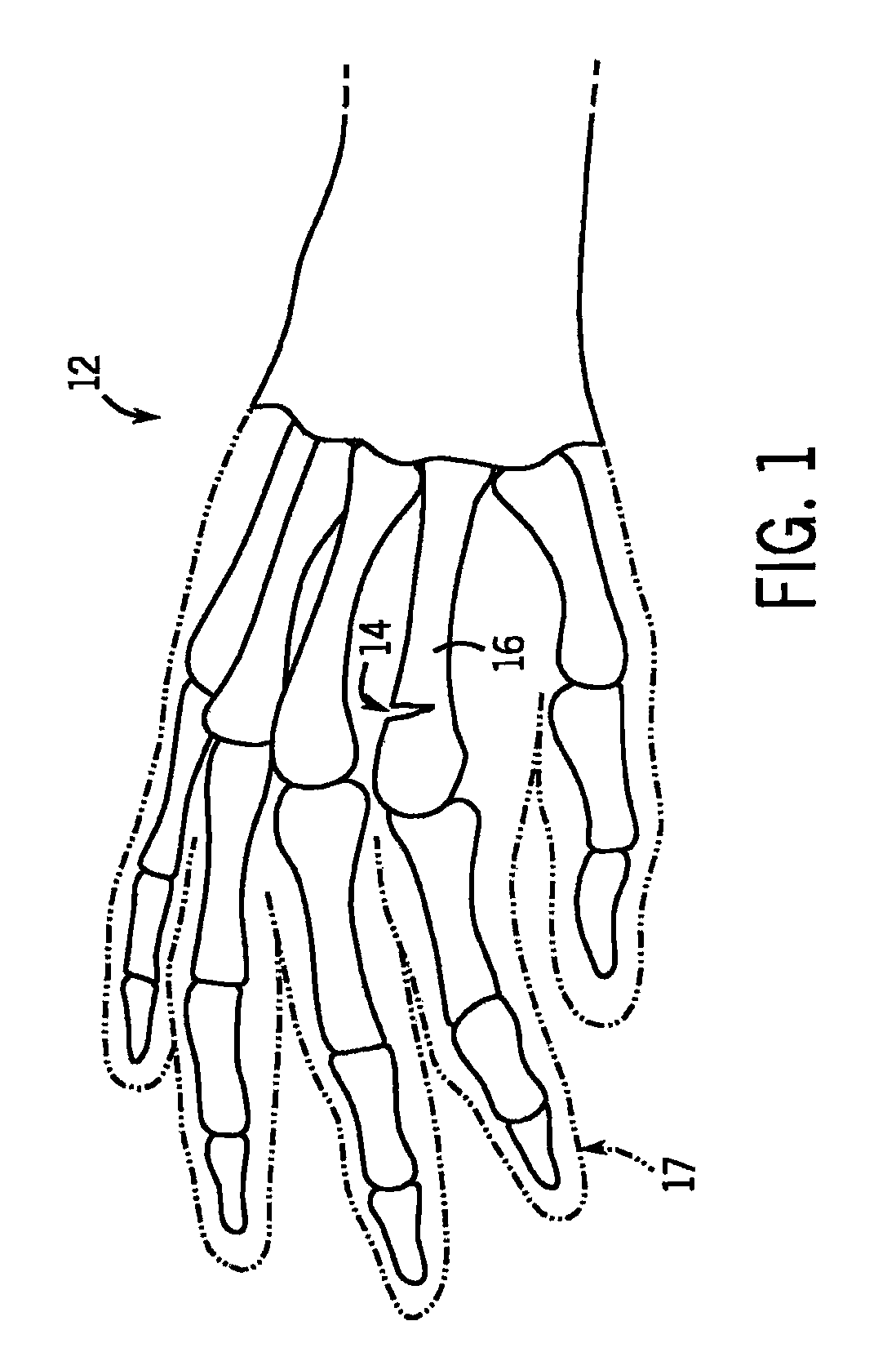Intramedullary fixation device for small bone fractures
a technology for fixing devices and fractures, applied in the field of small bone fracture fixation devices, can solve the problems of not having the memory curve, not being able to perform surgery, and not being able to straighten k-wires again, and achieve the effects of increasing the arc of curvature, and increasing the bending or flexion
- Summary
- Abstract
- Description
- Claims
- Application Information
AI Technical Summary
Benefits of technology
Problems solved by technology
Method used
Image
Examples
Embodiment Construction
[0043]Looking first at FIG. 1, there is shown a right human hand 12 having a fracture 14 in the second metacarpal 16 in the index finger 17. The method and devices according to the invention can be used for fixation of the fracture 14 of the second metacarpal 16 to maintain proper fracture reduction for healing. While the use of methods and devices according to the invention has been shown and described herein with reference to a fracture 14 of the second metacarpal 16, it should be appreciated that the methods and devices according to the invention can be used for the fixation of other small bone fractures, such as fractures of any of the phalangeal, metacarpal, and metatarsal bones. Also, while the methods and devices according to the invention shown and described herein only use a single wire form, one or more wire forms may be inserted into the intramedullary canal of the bone in the method.
[0044]In the method of the invention, an incision is first made in the skin and tissue ov...
PUM
 Login to View More
Login to View More Abstract
Description
Claims
Application Information
 Login to View More
Login to View More - R&D
- Intellectual Property
- Life Sciences
- Materials
- Tech Scout
- Unparalleled Data Quality
- Higher Quality Content
- 60% Fewer Hallucinations
Browse by: Latest US Patents, China's latest patents, Technical Efficacy Thesaurus, Application Domain, Technology Topic, Popular Technical Reports.
© 2025 PatSnap. All rights reserved.Legal|Privacy policy|Modern Slavery Act Transparency Statement|Sitemap|About US| Contact US: help@patsnap.com



